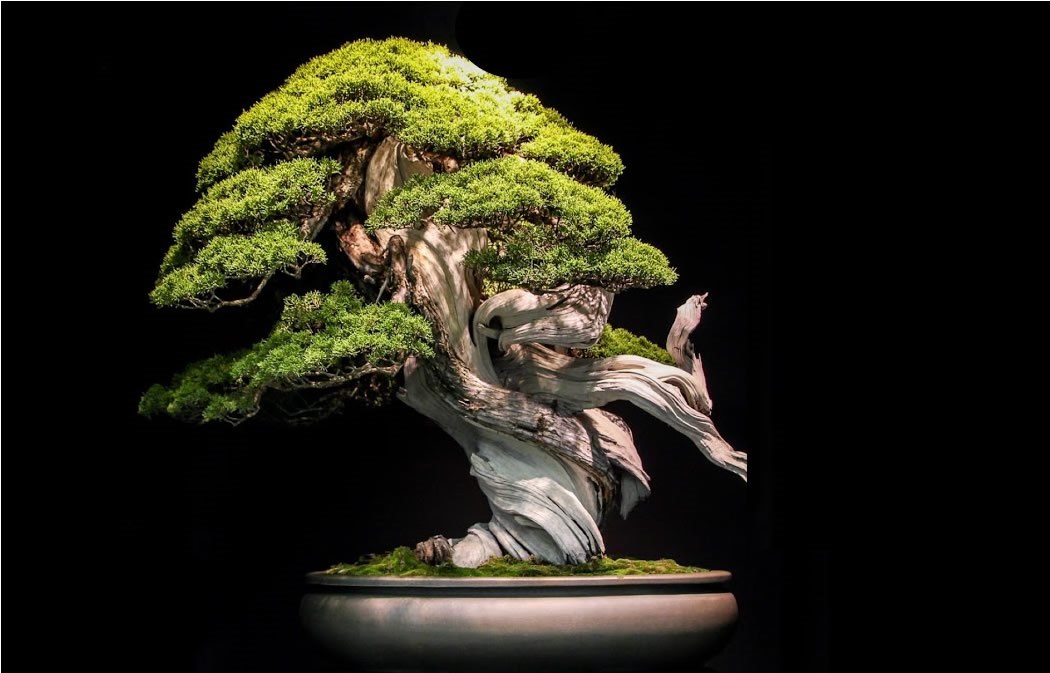
A Bosai-Tree is a small living tree or shrub that has been grown to mimic the shape of a real life tree. In fact, more expensive bonsai trees are larger, older, and have had more detailed, elaborate training.
So, Our team reviewed different Bonsai Trees on the market today and came to agree that Live Juniper Bonsai Tree and Lucky Live Dwarf Bonsai Tree are the Best Indoor & Outdoor Bonsai Trees in 2023.
Review Of 5 Best Bonsai Trees To Buy In 2023:
#1-CHOICE: Live Dwarf Juniper Bonsai Tree with Pot:
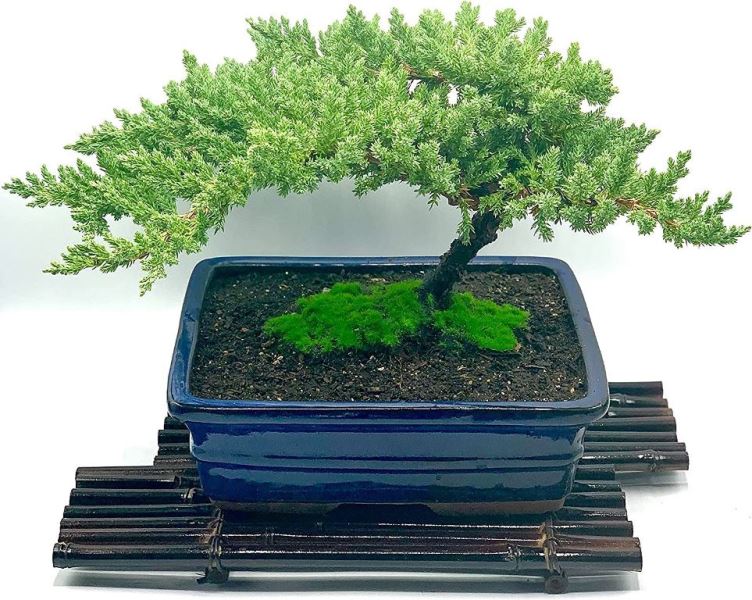
KEY-FEATURES:
|
#2-CHOICE: Lucky Live Dwarf Bonsai Tree:
KEY-FEATURES:
|
#3-CHOICE: KALIFANO Crystal Stone Bonsai Tree for Healing and Luck:
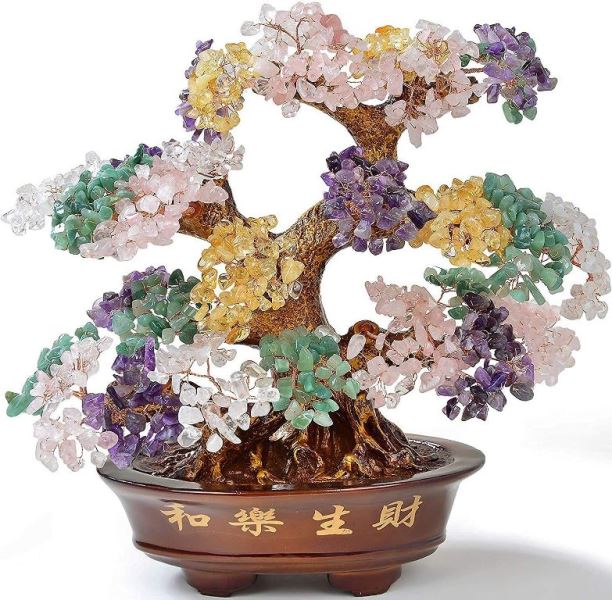
KEY-FEATURES:
|
#4-CHOICE: Live Chinese Elm Outdoor Bonsai Tree with Decorative Container:
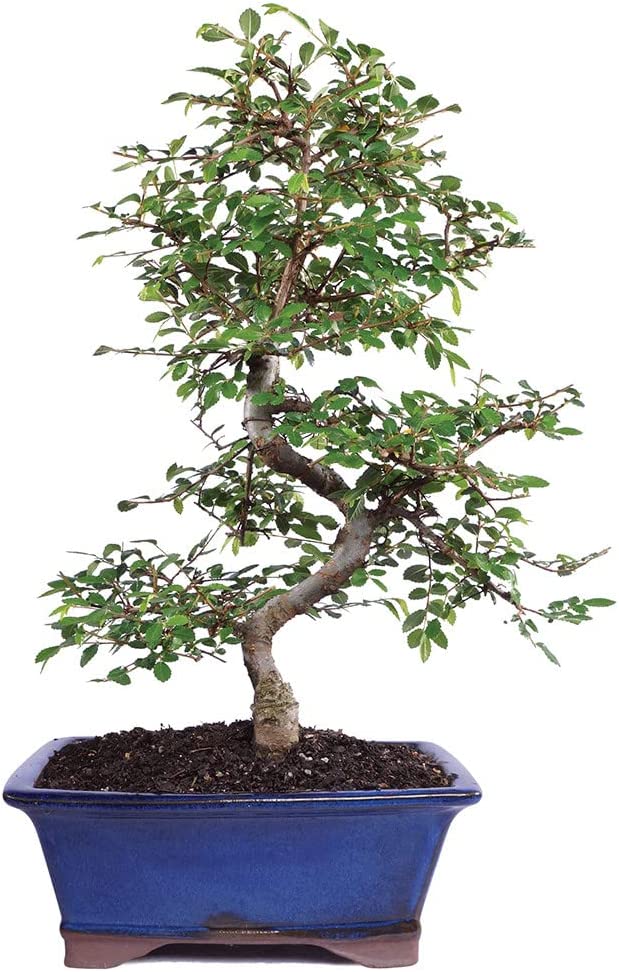
KEY-FEATURES:
|
#5-CHOICE: Brussel’s Live Gardenia Outdoor Bonsai-Tree with Decorative Container:

KEY-FEATURES:
|
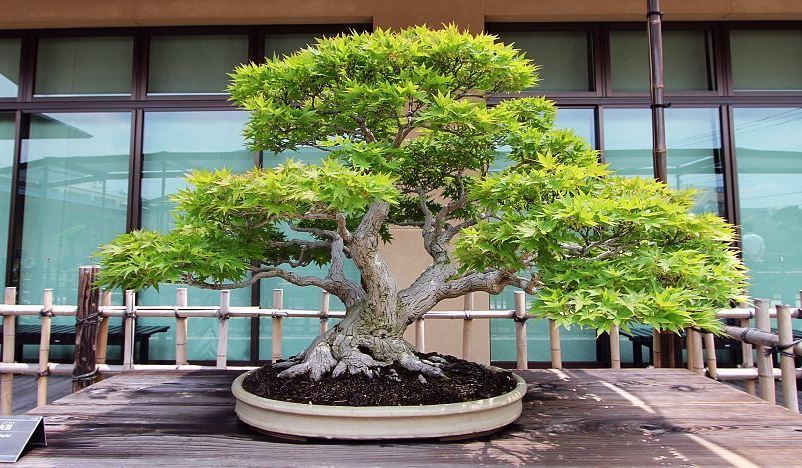
Frequently Asked Questions (FAQ’s):
What is a Bonsai Tree?
These are small, dwarf potted trees grown in containers and based on the Japanese model. Generally, bonsai-trees are created from perennial woody-stemmed tree or shrub species that produce true branches and can be cultivated to remain small within the pot by doing regular crown and root pruning. Additionally, bonsai-trees are not genetically dwarfed plants and any tree species can be used to grow one.
What is Bonsai?
Bonsai is a Japanese art of growing and training miniature trees in pots. In fact, this is an ancient living art form that utilizes growing and training techniques to produce miniature trees that mimic the appearance of larger trees. Additionally, the shape and size of your bonsai depends on the materials you are using.
Do Bonsai trees need to be watered every day?
No, But these trees should be watered for at least once every 4-to-7 days so as to keep them healthy. In fact, never leave your Bonsai-tree to dry-out completely because it might die completely.
What is so special about Bonsai-trees?
They help you to create a miniaturized but realistic representation of nature in form of a real tree within your home. In fact, these small trees have been around for over a thousand years and this makes them a very special piece within your home.
How long do bonsai trees stay alive?
With good care, a bonsai-tree can easily live for over 100 years or centuries. However, a bonsai-tree can quickly deplete the resources available if its not taken care of properly.
What techniques are used in making bonsai-trees?
The growing and training techniques used in producing miniature trees include: heavy crown pruning, root-pruning, defoliation, grafting, and root-confinement in shallow containers. There are also other techniques like wiring the trunks and branches into desired shapes.
Do bonsai trees bring good luck?
Yes, these trees are believed to bring good luck and harmony within your home. In fact, if you receive bonsai trees as a gift, then fortune will fall upon you.
What is the difference between a Bonsai-tree and Regular-tree?
A bonsai-tree is just miniature tree mimicking a larger mature tree and its created by taking some components from a big-tree and growing them into a small container. A regular-tree grows in a natural environment and its very big compared to bonsai’s.
Can a bonsai-tree grow to a full size?
Yes, bonsai trees can grow to a full size compared to other indoor plants. So, you should keep these trees small enough to be handled easily.
Why do bonsai-trees stay small?
Horticulture techniques such as pruning and confinement to a pot help these plants to retain their small shape and size over time.
Is it good to have a Bonsai tree at home?
Yes, because a bonsai helps to lower stress so that you can have a more relaxed mind. In fact, these trees will also help to lower blood pressure and even reduce on psychological stress.
Should a Bonsai tree be kept inside?
Yes, these trees can be grown indoors or outdoors but you will need to consider that they are used to varying temperatures and day length throughout the year when growing just like natural trees.
Can bonsai trees survive winter?
It depends, because most tropical bonsai-trees will not tolerate temperatures below 40-degrees Fahrenheit for any length of time without some damage. So, you can place them in a shade or provide lower light conditions if winter arrives.
Do bonsai trees prefer the sun or shade?
Most bonsai-trees require direct sunlight in-order to make their food. So, a lack of direct sunlight can damage them by causing weak foliage and other issues. So, your bonsai should receive at least 5-to-6 hours of sunlight daily whether inside or outside.
Where should bonsai-trees be kept in the house?
An indoor bonsai-tree should be kept near the window while facing it in-order to receive enough light that is crucial for its health. In fact, if a bonsai is kept away from the window, the light intensity will drop significantly hence slowing down growth and ultimately killing your Bonsai-tree.
Can you grow bonsai-trees in normal pots?
Yes, you can actually grow bonsai’s in most regular containers as long as they have drainage holes and wiring holes.
Do Bonsai-trees purify air?
Yes, these trees can reduce on indoor air-pollutants and even purify air indoors. However, some bonsai-species filter air better than others.
Are bonsai-trees hard to take care of?
No, these miniature trees are very easy to take care of as long as you water, prune, place then in sunlight and re-pot them.
Do bonsai trees attract bugs?
Yes, these small-trees harbour insects like; Aphids, Spiders, bugs, weevils, and alot more. However, this should not scare you because most insects are harmless.
Should I leave a bonsai-tree outside during winter?
It depends, because most bonsai’s will be ok outdoors in temperatures below 35-degrees depending on the species. However, they are more likely to drop leaves and stop growing until the weather warms up. However, if you want to keep your bonsai looking good all year round, then consider providing additional heat and shelter in winter season.
Why is my indoor bonsai tree dying out?
In case you don’t water your Bonsai, the soil will dry-out completely causing the roots to quickly dry-out. Additionally, if your tree is not getting enough sunlight, then it will start dying-out slowly over time. So, always water your bonsai and also place it near the window so that it can receive enough sunlight to stay healthy.
What you should not do to a bonsai-tree?
- Over pruning the tree.
- Using the wrong type of soil.
- Underwatering or Overwatering.
- Selecting the wrong bonsai pot.
- Not adding fertilizers to the pot.
- Positioning it away from sunlight.
- Using the wrong tools to prune it.
- Placing it in the wrong environment.
Advantages of bonsai trees:
+ They connect you to nature.
+ Make a perfect a family heirloom.
+ Alleviate on depression and anxiety.
+ Add beauty & elegance to your home.
+ They are great for spiritual awakening.
+ Teach you on how to take care of plants.
+ Lower blood pressure through active interaction.
+ Reduce indoor air-pollutants & purify air indoors.
+ Have the ability to maintain humidity in any space.
+ Can make a great gift for any meaningful occasions.
+ They reduce on the feelings of psychological stress.
+ They are available in different species to choose from depending on your needs.
+ Help you learn about the power of consistency through regular maintenance of the trees.
+ Can be used as home-décor by displaying them in the living-room, bedroom, or study room.
+ Help you develop patience and work hard through regular watering, fertilization, and pruning.
+ Boost creativity by growing a bonsai practically and in any manner you prefer using the right tactics.
Disadvantages of bonsai trees:
– Older trees are very expensive.
– May cause an insect infestation.
– They require constant care & attention.
– They require patience to grow out perfectly.
– May cause microscopic toxic spores like; black mold.
– Can’t be left for weeks by themselves compared to other plants.
– It takes time to learn how to perfectly take care of a bonsai-tree.
– They may cause mold if the soil of your bonsai-tree is kept too moist.
– Capable of causing health issues like; sinus-congestion, body-fatigue, and memory impairment.

How To Prune A Bonsai Tree:
*Remove all weeds & dead wood or leaves from your bonsai-tree: Look for weeds growing in the bonsai pot as well as dead twigs or leaves on the tree itself. After, carefully pluck out the weeds while making sure not to damage the roots of the bonsai. Pick dead twigs or leaves off of the tree and discard them.
*Trim any crossed and broken branches: Crossed branches rub on each other and leave wounds that may allow pests or diseases into the wood. So, broken branches or twigs should be removed to allow the tree to direct its energy towards new growth. In fact, you should use bonsai branch cutters to cut crossed and broken branches off just above the point where they extend out from the trunk of the tree.
*Cut back twigs so they only have 3-to-4 nodes: Nodes are the joints that leaves grow out of. So, once a twig has 6-to-8 nodes, cut them down so that only 3-to-4 nodes remain. Additionally, make a clean cut just above the remaining nodes with branch or knob cutters. This help keep the tree from growing too big and also encourages new growth.
*Prune heavily in the spring & summer seasons: Although bonsai trees can be pruned year-round, most of the pruning should be done when the tree is actively growing through the spring and summer seasons. So, depending on your location, this may be from March to September.
*Prune for structure & style from November to February: To ensure that you don’t damage the tree too much or stunt its growth, you should only prune for structure and style while the tree is dormant. In fact, this should be done during the winter months of November to February.
*Cut-off any large branches: Large branches that protrude from the tree can be removed. Likewise, branches with unnatural twists or turns or those that look displeasing to the eye can also also be cut-off. So, cut each branch just above a node in a place that helps to balance the look of the tree. Use branch cutters to achieve a clean cut.
*Thin out the crown and canopy: In-order to allow light to filter through the canopy and reach the lower branches as well as to shape the canopy to the desired size, trim back the branches or twigs on the top of the tree. Use branch cutters to trim down overgrown branches and shoots so that the canopy is rounded and balanced.
*Remove any suckers from the bonsai-tree: Suckers are small offshoots that can grow on the base of the trunk or on branches of the bonsai-tree. These can be plucked off with your fingers to help maintain the balance and aesthetics of the tree. So, remove any suckers that you think detract from the overall appeal of the bonsai.
*Twist-off the buds from conifer trees: In-order to create a more compact shape, use your fingers to pinch out whole needles from areas that are too large or overgrown. Twist the needles to remove them from the twigs. Additionally, leave 3 needles on each branch but feel free to remove the rest. This will encourage more branching on the tree.
*Defoliate deciduous trees after new growth has settled in: Defoliation gets rid of old, long leaves and encourages the growth of smaller & more aesthetically-pleasing leaves. So, cut away each leaf at the base while leaving the stalk alone. In fact, new smaller leaves will grow in their place. However, this is a risky technique as defoliating done during the wrong time of year may mean the tree might never recover.
*Cover any cuts with wound paste: To prevent too much sap from leaking out and to help the cuts heal, apply bonsai wound paste to the bruises. So, squeeze a small amount of the cream onto a gloved finger and smear a light layer over each cut. In fact, you can find bonsai wound paste at gardening centers and online-stores.
*Water the bonsai-tree immediately after pruning: It’s very important to water the bonsai deeply after pruning to encourage new growth. However, make sure to fully saturate the soil the first time you water the tree after pruning.
*Water the tree lightly once daily: You should only water deeply immediately after pruning and then water the bonsai-tree lightly each day. Aim to keep the soil moist but not soggy. In fact, oversaturating the soil could lead to root rot, so take care not to water the tree too much.
*Apply a 7-7-7 fertilizer every 2-weeks while the bonsai-tree is actively growing: Select a fertilizer made specifically for bonsai trees like; 7-7-7 fertilizer. However, use liquid fertilizer for small bonsais and granular fertilizer for large bonsais. Dilute the fertilizer to half strength or use half as much as directed on the package.
CONCLUSION:
All the featured Bonsai trees are Eco-friendly and designed to keep your indoor or outdoor air clean in 2023. In fact, these trees are also designed to accommodate any architectural setting of your home.
RELATED POSTS:
>Best Flower Vases.
>Best Outdoor Lights.
>Best Ceramic Flower Vases.
